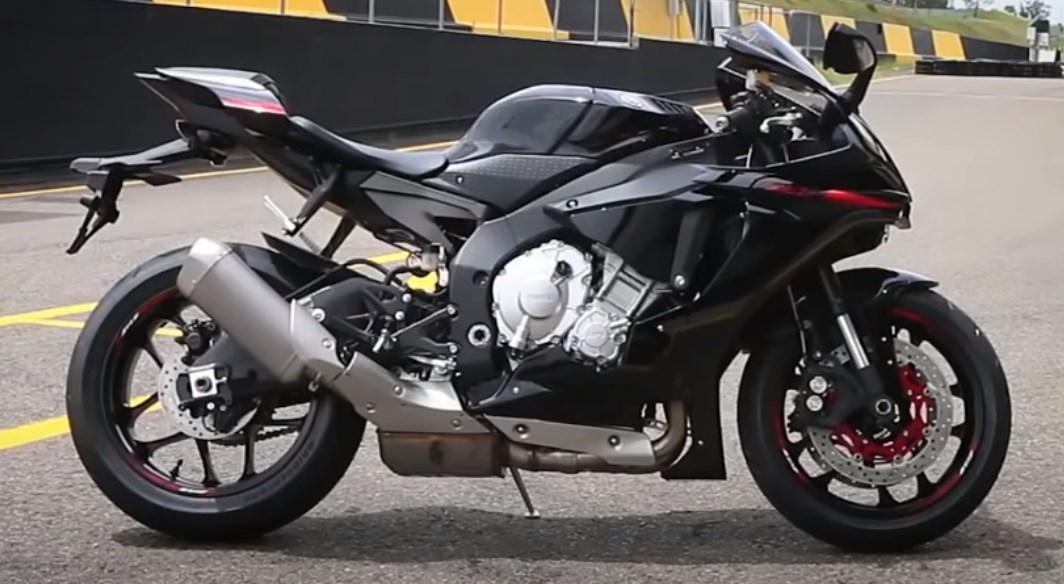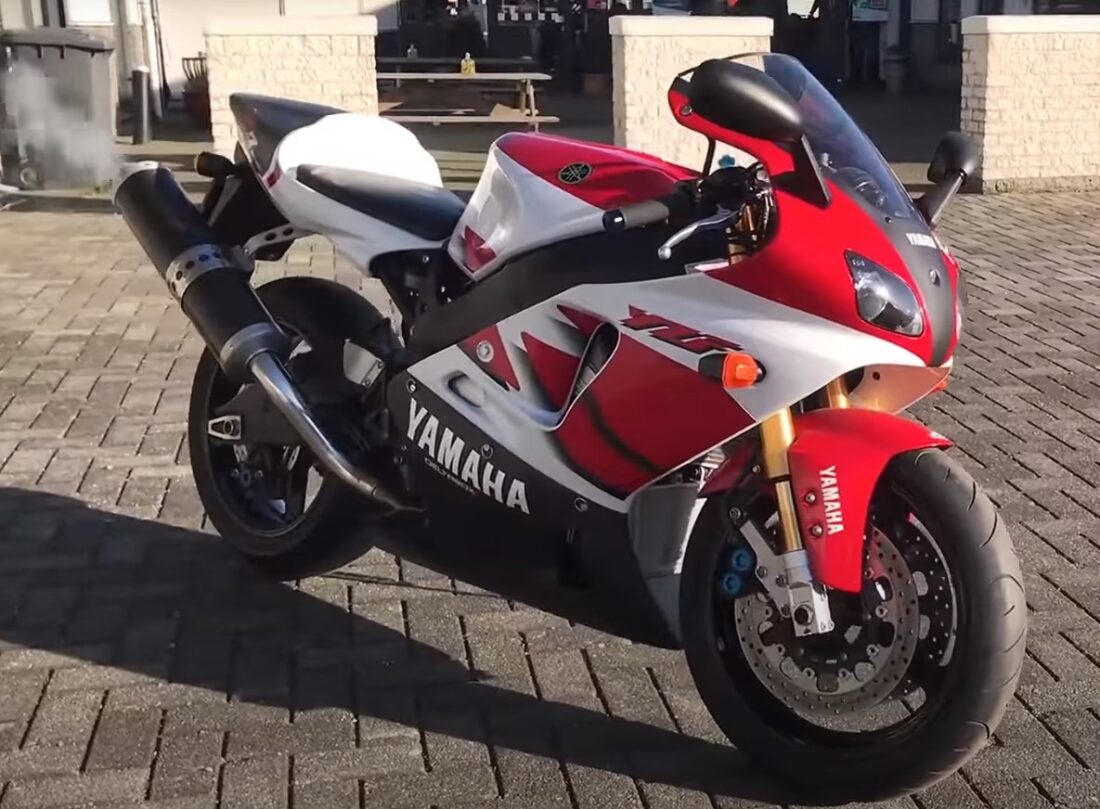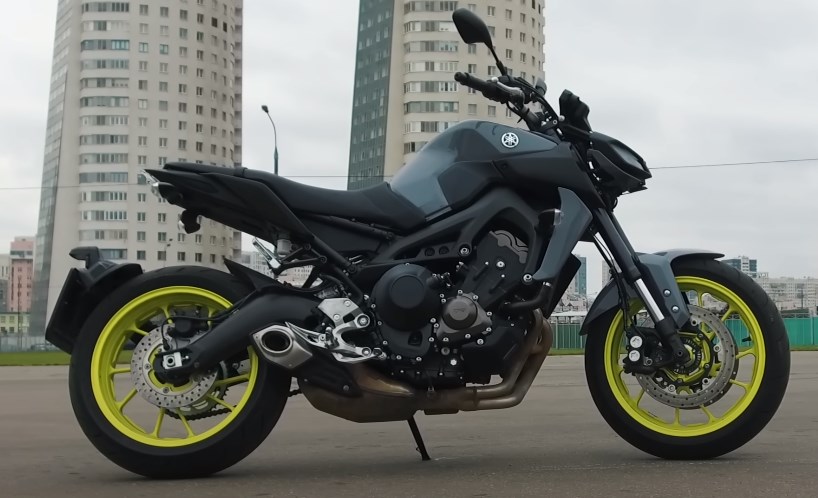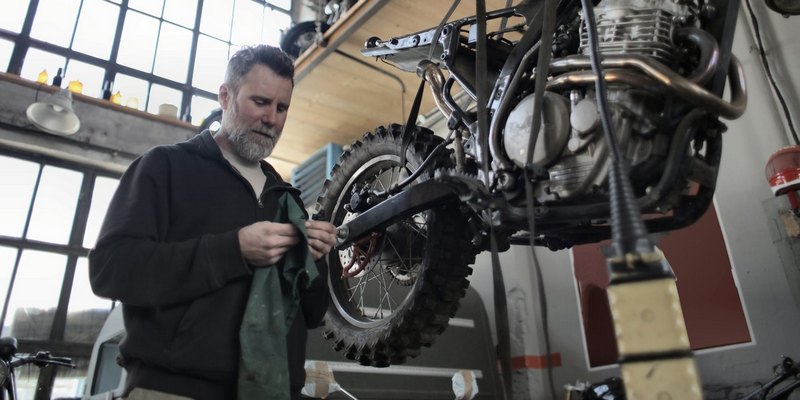Exploring Yamaha’s Apex-Speed Machines: The Top 5 Standouts

Are you intrigued by motorcycles that offer a perfect blend of high performance and advanced technology? Yamaha has consistently been a front-runner in producing such marvels, ever since the launch of its inaugural YA-1 model.
This article aims to shed light on Yamaha’s top-speed two-wheelers, diving into the intricate details of each model’s engine specifications, aesthetics, and rider aids. Read on to make an informed choice about which of these high-speed machines best suits your riding ambitions.
The Apex-Speed Marvels by Yamaha: 5 Must-Consider Options
Yamaha, a brand synonymous with high performance and innovation, has a storied history of crafting some of the most potent and rapid two-wheelers in the marketplace.
Beginning with the 1955 YA-1 model, colloquially known as the Red Dragonfly, Yamaha has consistently disrupted the status quo, transitioning from the agile two-stroke machines of the 70s and 80s to the contemporary MT series that has redefined street-riding expectations.
- YZF-R1: This model sits at the pinnacle of Yamaha’s high-velocity offerings, boasting an extraordinary 185 mph top speed.
Insight into the 2023 Yamaha High-Speed Lineup
Data based on European Specifications:
- YZF-R1: 998 cc, inline-four, cross-plane, CP4 engine; 197 hp; 113.3 Nm; 185 mph (electronically limited);
- MT-10: 998 cc, inline-four, CP4 engine; 163 hp; 112 Nm; 160 mph;
- FJR1300ES: 1,298 cc, inline-four engine; 144 hp; 138 Nm; 154 mph;
- YZF-R7: 698 cc, twin-cylinder, CP2 engine; 72 hp; 67 Nm; 139 mph;
- MT-09: 890 cc, three-cylinder, CP3 engine; 117 hp; 93 Nm; 135 mph;
- Super Ténéré: 1,199 cc, twin-cylinder engine; 112 hp; 116 Nm; 130 mph;
- YZF-R3: 321 cc, twin-cylinder engine; 41 hp; 29.5 Nm; 112 mph.
Shared Engine Platforms and Their Impact on Performance
Yamaha often incorporates the same power units across multiple models to optimize research and development costs. For instance, the MT-09, XSR900, and Tracer 9 GT all feature the identical CP3 engine, yielding comparable performance metrics. This redundancy is why the list focuses exclusively on the MT-09 as representative of this engine class.
Uniquely, both the YZF-R1 and MT-10 come with a CP4 engine. However, the MT-10 is calibrated to offer more moderate power in lower rpm ranges, making it more suitable for everyday street use. In contrast, the YZF-R1 is fine-tuned to harness the full capacity of the CP4 engine, rendering it a high-performance, sport-oriented machine.
In-Depth Exploration of Top Yamaha Speedsters
YZF-R1
The YZF-R1 has been an enduring favorite among sports motorcycle aficionados for more than two decades. The 998 cc, liquid-cooled inline-four DOHC engine—with four valves per cylinder—delivers 197 horsepower and an electronically limited top speed of 185 mph.

It features an array of cutting-edge technology, such as Yamaha Chip Controlled Throttle (YCC-T), to offer unmatched control to the rider. It also comes with advanced rider aids like launch control, traction control, and multiple power modes, all housed in an aluminum Deltabox frame and completed by a magnesium subframe and aluminum swingarm.
- Current MSRP: $17,999
MT-10
Following closely behind is the MT-10, sporting a similar 998 cc, liquid-cooled inline-four DOHC engine but with a distinctive tuning approach. Aimed at producing accessible power at lower rpm ranges, the MT-10 delivers 163 horsepower and can reach a top speed of approximately 160 mph.

Unlike the racing posture on the R1, the MT-10 offers a more upright seating arrangement, enhancing both control and comfort for all-day riding. Also, this model benefits from a comprehensive range of electronic rider aids, including cruise control and wheelie control.
- Current MSRP: $14,199
FJR1300ES: The Balanced Marvel in Sports Touring
Established in the early 2000s, the FJR1300ES has been a game-changing addition to the sports-touring segment for over two decades. It deftly melds the attributes of both a high-performing sports cycle and a long-distance touring cruiser.
Highlights:
- Horsepower: A formidable 144 hp;
- Torque: Stellar 138 Nm;
- Top Velocity: Approximately 154 mph.
An impressive 1,298 cc inline-four engine serves as the powerhouse, distributing a balanced surge of power across the entire RPM spectrum. This allows for consistent and smooth acceleration, making it ideal for any driving scenario.
Built for endurance, the FJR1300ES offers ample comfort for both the driver and the passenger, even when loaded with luggage. It’s engineered for extensive journeys, with an array of rider assist options and accessory adjustments to customize the riding experience to your preferences.
Specifications:
- Engine: 1,298 cc liquid-cooled DOHC in-line 4-cylinder; 16 valves;
- Seat height: 31.7”;
- Curb weight: 642 lbs;
- Current MSRP: $18,299.
YZF-R7: The Return of a Middleweight Contender
After a hiatus, the YZF-R7 made a dramatic comeback in 2022, re-establishing itself in Yamaha’s sports cycle lineup. This machine offers a compelling alternative to the R6, providing an exhilarating middleweight experience.
Highlights:
- Estimated Maximum Velocity: 139 mph;
- Engine: Inherits the CP2, twin-cylinder engine from MT-07;
- Styling: Takes inspiration from the MotoGP M1.
Its aerodynamic chassis and lightweight construction contribute significantly to its rapid pace. While it may lack some of the advanced electronic systems featured in its larger counterpart, the R1, the YZF-R7 compensates with basic yet highly effective sport-oriented features. This allows riders to hone their skills without over-reliance on electronic aids.

Specifications:
- Engine: 689 cc liquid-cooled, 4-stroke, DOHC in-line twin-cylinder; 4 valves per cylinder;
- Seat height: 32.9”;
- Curb weight: 414 lbs;
- Current MSRP: $9,199.
MT-09: The Versatile Dark Horse
Positioned just behind the MT-10 in terms of raw power, the MT-09 offers an incredible level of performance that is accessible to daily riders. The machine comes equipped with a three-cylinder CP3 engine, delivering excellent torque and a top velocity of around 130 mph.

The MT-09’s nimble design enables you to navigate everything from open roads to tight city corners with ease. The upright riding position mimics that of its larger MT-10 counterpart, providing a comfortable yet confident riding experience.
Specifications:
- Engine: 890 cc liquid-cooled, DOHC, in-line 3-cylinder; 4 valves per cylinder;
- Seat height: 32.5”;
- Curb weight: 417 lbs;
- Current MSRP: $9,799.
Other Speed Demons in Yamaha’s Heritage
While Yamaha’s 2023 lineup is undoubtedly impressive, it’s worth noting that the company has a rich history of engineering high-velocity machines. Yamaha’s portfolio across various decades showcases an unwavering commitment to combining technological innovation with design excellence to produce some of the quickest two-wheelers ever seen.
Yamaha V-Max: The Muscle Cruiser That Ruled the Roads
The Yamaha V-Max emerged as the brand’s debut venture into muscle cruisers, establishing itself as a distinctive and powerful force in the motorcycle world. By the time production ceased in 2019, the V-Max had achieved a remarkable output of 173 horsepower measured at the rear wheel.
Over its lifetime, which commenced in 1985, the V-Max underwent multiple modifications, witnessing several updates and boosts in engine size. Its top velocity claims have varied, with reports ranging from 135 to 140 mph and some adventurous assertions even stretching to 150 mph. Considering its hefty build as a muscle cruiser, these are undoubtedly impressive statistics.
Notable Characteristics:
- Horsepower: 173 at the rear wheel;
- Engine Capacity Increases: Notable improvements since its initial 1985 launch;
- Top Speed: Ranges from 135 mph to as high as 150 mph.
YZF-R6: The Glory of the 600-cc Era
The YZF-R6 was Yamaha’s answer to the surging popularity of 600-cc class motorcycles that gained attention in the late 1990s. Although production ceased in 2020, the early versions, particularly those manufactured from 1999 to 2006, are considered among the finest 600-cc machines ever constructed.
What distinguished these motorcycles wasn’t necessarily the sheer power or velocity. Instead, their rapid acceleration times set them apart from competitors. Astonishingly, all R6 variants clocked 0-60 mph times in under three seconds, a notable achievement indeed. During its era, the R6 recorded maximum speeds varying from 155 mph to approximately 165 mph. For a machine with a 600-cc engine, such performance metrics are nothing short of spectacular.
Unmissable Features:
- Acceleration: Under 3 seconds from 0-60 mph;
- Maximum Speed: Between 155 mph and 165 mph;
- Engine Class: 600-cc.
The Two-Stroke Icons: A Salute to Yamaha’s Historic Ventures
Discussing Yamaha’s speed-oriented achievements without mentioning their legendary two-stroke models from the 1970s and 1980s would be incomplete. This period presented challenges for the motorcycle industry, primarily in the U.S., as increasingly stringent emissions laws came into effect. However, some of Yamaha’s constructions from this era have reached iconic status and were privately imported into the U.S.
Among these legends is the RD350LC, affectionately termed “Elsie,” which was primarily manufactured for the British market. Succeeding the TZ two-strokes, the RD350LC emerged as a fan favorite. Known for its lightning speed yet unpredictable stability, it was an adrenaline-pumping machine that could soar up to 110 mph, outperforming its 400-cc TZ counterpart that plateaued below 100 mph.
Another hallmark two-stroke model from this era was the TZ750. Revered and feared in equal measure, this model was so powerful that it was banned from flat-track events after winning against a Harley 750 in its first race. With a top speed exceeding 170 mph, the TZ750 was a featherweight powerhouse that commanded respect and caution from those who dared to ride it.
Both the RD and TZ series are considered collectors’ items today and are increasingly rare to find in pristine condition.
Key Highlights:
- RD350LC: Nicknamed “Elsie,” top speed of 110 mph;
- TZ750: Banned from flat-track events, top speed over 170 mph;
- Emissions Challenges: A complex era due to stringent emissions laws.
By delving into these distinct models, one can truly appreciate the depth and range of Yamaha’s engineering marvels, each remarkable in its performance capabilities.
The Unrivaled Speed Icon: Yamaha’s YZF-R1
When it comes to sheer power and velocity, the YZF-R1 stands in a league of its own among the lineup of two-wheelers from Yamaha. This awe-inspiring machine derives its tremendous performance from its CP4 engine, boasting a staggering 197 horsepower. Although its maximum velocity is restricted electronically by the manufacturer, the YZF-R1 is widely accepted to surpass speeds of 185 mph.
While this may be tantalizing, it is important to acknowledge that such an electronic limitation only adds an air of mystery to the true potential of this mechanical marvel. However, velocity isn’t the only metric where the YZF-R1 shines. It sets an equally compelling benchmark when it comes to acceleration.
Though there is some disparity in available statistics, several skilled riders and test pilots claim that the specialized YZF-R1M model achieves a 0-60 mph acceleration time of a mere 2.6 seconds, with the standard version trailing slightly at 3 seconds. It is this combination of rapid acceleration and mind-bending velocity that marks the YZF-R1 as a dream machine for thrill-seeking sports riders.
Features:
- Engine: CP4, with an output of 197 horsepower;
- Velocity Parameters: Capped electronically, yet surpasses 185 mph;
- Acceleration: YZF-R1M clocks at 2.6 seconds for 0-60 mph; 3 seconds for the standard model.
The Evolution of Yamaha’s Racing Innovations
One of the compelling aspects of Yamaha’s legacy in the realm of high-velocity two-wheelers is its unrelenting commitment to innovation. For example, the company has been a pioneer in incorporating advanced electronic control systems in its sports models.
Systems like “Slide Control,” “Lift Control,” and even advanced “Launch Control” were developed to fine-tune the riding experience, offering unprecedented control to riders. These advanced systems showcase the brand’s commitment to fusing high-performance mechanics with state-of-the-art technology.
Key Innovations:
- Slide Control System: Aids in controlling rear-wheel slide;
- Lift Control System: Regulates front-wheel lift during acceleration;
- Launch Control System: Optimizes engine output for quicker starts.
Sustainability Initiatives from Yamaha’s Two-Wheeler Division
While Yamaha is traditionally recognized for producing some of the most exhilarating and high-powered sports machines on the planet, the brand is also invested in creating a more sustainable future. A foray into electric two-wheelers and hybrid technologies has marked the company’s sustainability journey.
By marrying their known prowess in performance and engineering with eco-friendly technologies, they aim to set new industry standards that embrace both speed and sustainability.
Sustainable Approaches:
- Electric Models: Investment in developing high-performance electric two-wheelers;
- Hybrid Technologies: Combining traditional and electric power for better fuel efficiency;
- Recycling Programs: Initiatives to recycle used machines for a more circular economy.
Conclusion
Yamaha has secured its reputation as a maker of some of the most formidable high-velocity two-wheelers. The YZF-R1 stands as a testament to the brand’s brilliance, offering a blend of breathtaking speed and remarkable acceleration, all while incorporating groundbreaking technology and features. Furthermore, Yamaha is looking beyond mere speed to set new benchmarks in technological innovation and sustainable mobility solutions.
Their pioneering control systems and initiatives in sustainability demonstrate a holistic vision for the future of motorcycling—one that combines thrills, control, and eco-friendliness in one exceptional package.
By constantly pushing the boundaries of what is possible, Yamaha’s engineering marvels are not just machines but extensions of human potential and imagination. From their top-of-the-line sports models to their commitment to environmental sustainability, Yamaha is redefining what it means to be an industry leader.
